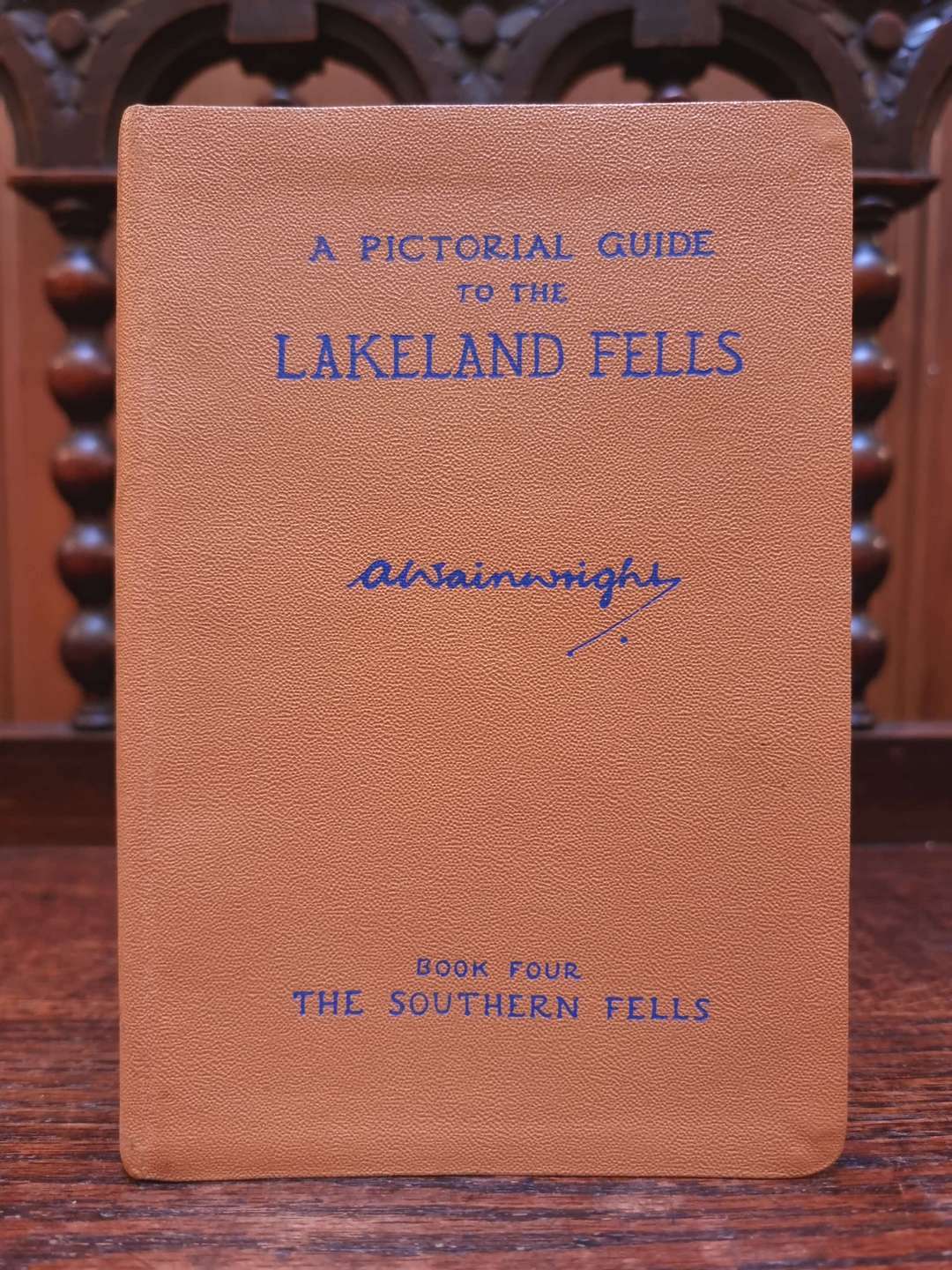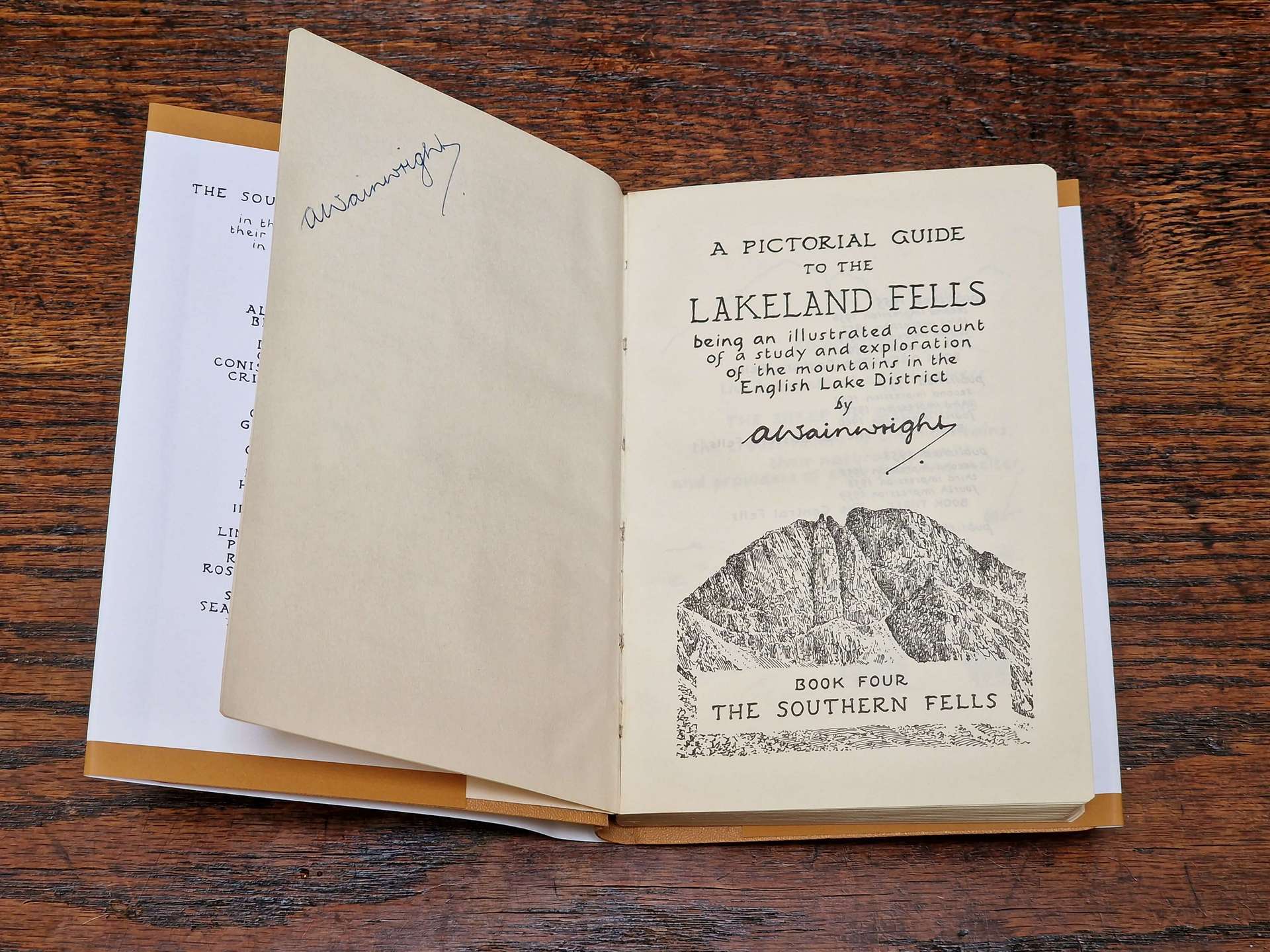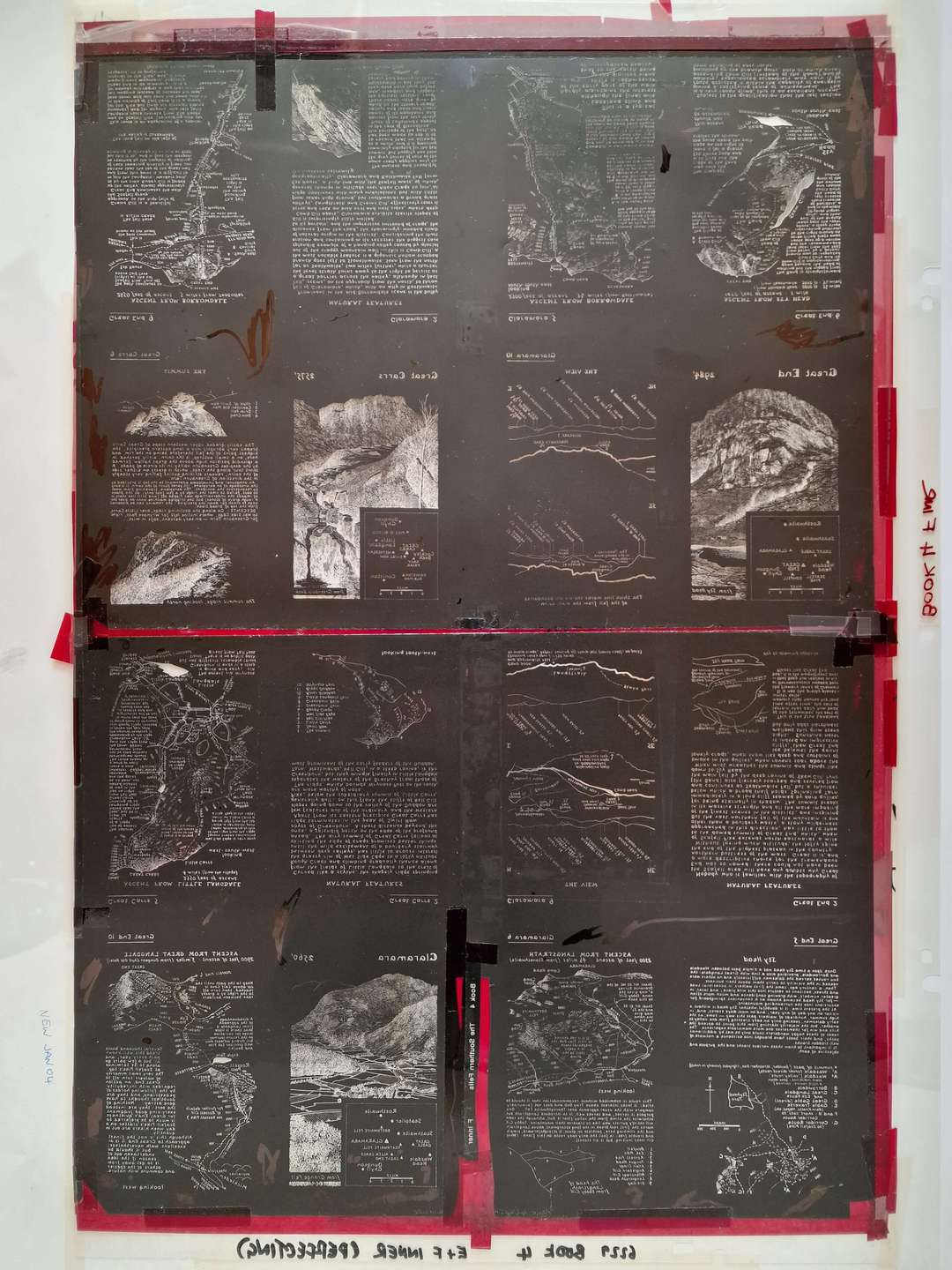The Southern Fells
The Southern Fells was published in April 1960 and was dedicated to:
“The hardiest of all fellwalkers THE SHEEP OF LAKELAND the truest lovers of the mountains, their natural homes and providers of their food and shelter”
<<>>
Even before its publication, Book Four was anticipated to become Wainwright’s best-selling guide to the Lakeland region. Unsurprisingly, it showcases numerous beloved Lakeland peaks, including Bowfell, Coniston Old Man, Glaramara, Rossett Pike (and Gill), Dow Crag, Wetherlam, and the notable Scafell and its Pike. In his most recent guide, Wainwright’s extensive knowledge of the fells and his trademark sense of humour remains robust. He eloquently characterises this area as “a bit of heaven fallen upon the earth.”

Until now, Wainwright’s most successful book has been The Eastern Fells, which has maintained its dominance for decades, closely followed by The Central Fells. However, a notable shift was on the horizon with the release of his latest publication, as it surpassed the sales of all six other Lakeland Pictorial Guides.


<<>>
A First Edition is identified by:
- Orange case with round corners and blue blocking
- 12/6 price on the dust jacket
- No impression number
- Book Five listed as – in preparation





Similar to the trend observed in all the other guides, the cases underwent significant changes during the 1970s. The original orange case also became obsolete due to the limited availability of case colours.



In 1989, the A Coast to Coast Walk guide emerged as a bestseller for the Westmorland Gazette, driven by the widespread popularity of the BBC’s Coast to Coast Walk TV series. Despite this, The Southern Fells secured the top spot in overall sales. However, it’s important to note that comparing the two is somewhat unfair, given that The Southern Fells had the advantage of being published thirteen years before A Coast to Coast Walk.
By 1965, the guide’s price had risen to 15/-, increasing to 18/- before decimalisation in 1971. Initially, the early dust jackets leaned towards a brown colour. It wasn’t until the early 1970s that the dust jacket adopted an orange hue to match the book closely.






Wainwright approved a series of cost-saving measures, including removing gold blocking from the front of the cases in 1980. Subsequently, after the guide exceeded the hundredth impression mark in 1985, the numbering of impressions was discontinued.

Wainwright had prepared lists of numbers in advance for future impressions. When The Southern Fells reached the one-hundred and fifteenth impression, the Gazette lacked an old guide to scan the word ‘fifteenth.’ Unfortunately, Wainwright’s deteriorating eyesight prevented him from writing the numbers neatly enough to match the old ones. Printer’s type was employed for the final three impressions and seemed distinct, not having been used on any other Pictorial Guides.


In 1991, the publishing rights were handed over to Michael Joseph, setting the stage for the launch of the new guidebook in April 1992. All subsequent impressions were produced at Clays Ltd in Bungay. As time passed, the print quality experienced a decline, necessitating efforts to restore the books to their original brilliance.




As the new millennium began, guidebook sales experienced a decline, exacerbated by the outbreak of foot-and-mouth disease in 2001. This disease adversely affected agriculture and tourism in the UK, contributing to the slump in sales. In 2003, Frances Lincoln assumed the publishing rights, bringing the guides back to Kendal.
The April 2003 relaunch proved highly successful, with Titus Wilson facing challenges to meet the printing demands. After being in storage for twelve years, the original Gazette negatives were retrieved and reused, restoring print quality comparable to the original guides. Each of the seven directions received two impressions. The Central Fells and The Southern Fells warranted a third impression, distinguishing them as the most favoured regions in the Lake District.
Fortunately, Titus Wilson had retained the old Michael Joseph dust jacket negatives from 1992. These were repurposed and utilised for the Frances Lincoln guides released in 2003.



In 2005, Frances Lincoln commemorated the 50th anniversary of The Eastern Fells by issuing new guides featuring a Limited Edition Leather-Bound box set.

From left to right:
The Southern Fells (50th), F. Lincoln 2005
The Southern Fells (50th) Leather-Bound, F. Lincoln 2005











The 50th Anniversary Editions debuted in paperback format in June 2023 and were presented as a box set. See the Wainwright Box Set Collection for details.

Chris Jesty was nearing the completion of his revisions for all seven Pictorial Guides to the Lakeland Fells. The Southern Fells – Second Edition was released in 2007. In 2009, Frances Lincoln published a cloth-bound ten-guide box set, drawing inspiration from the 50th Anniversary Editions. Two years later, Quarto acquired Frances Lincoln.

From left to right:
The Southern Fells (SE), F. Lincoln 2007
The Southern Fells (SE) revised, F. Lincoln 2007
The Southern Fells (RE) low gsm paper, F. Lincoln 2009
The Southern Fells (RE) high gsm paper, F. Lincoln 2009
After ten years, some of the Second Editions were out of date. In 2014, Clive Hutchby succeeded Chris Jesty and began revising the guides from scratch. The Southern Fells – Walkers Edition was published as a flexibound guide in 2017. Eventually, both the Readers and Walkers Editions became printed as paperbacks.

From left to right:
The Southern Fells (RE) hardback, F. Lincoln 2017
The Southern Fells (RE) paperback, F. Lincoln 2021
The Southern Fells (WE) flexibound, F. Lincoln 2017
The Southern Fells (WE) paperback, F. Lincoln 2020
The video below showcases a compilation of printing materials from various publishers of Wainwright’s best-selling guidebook.


